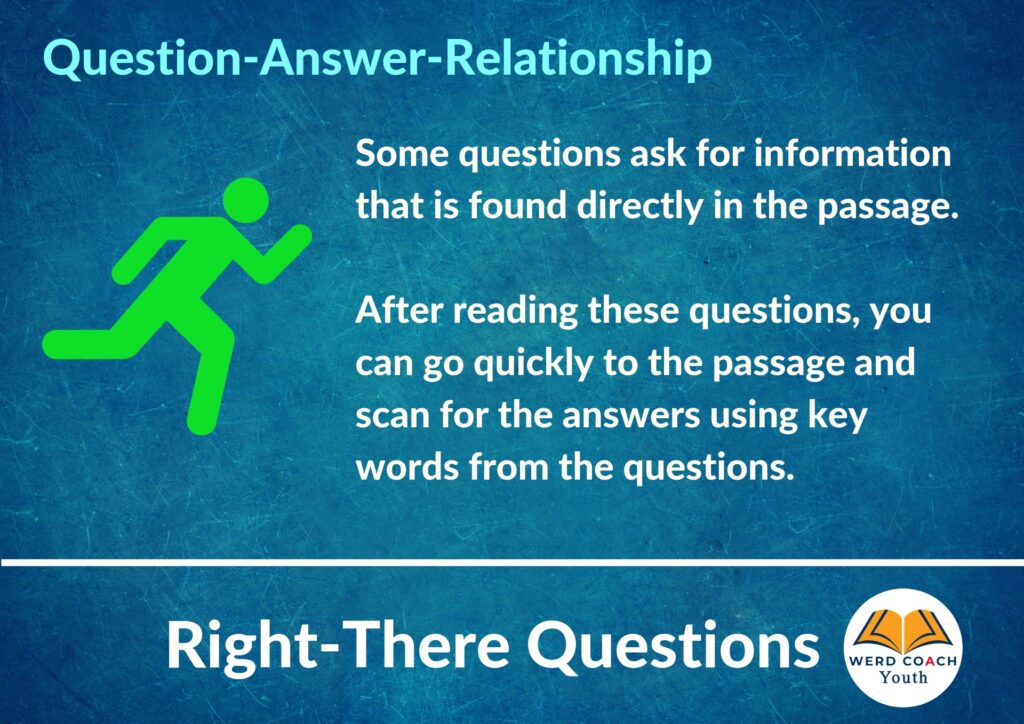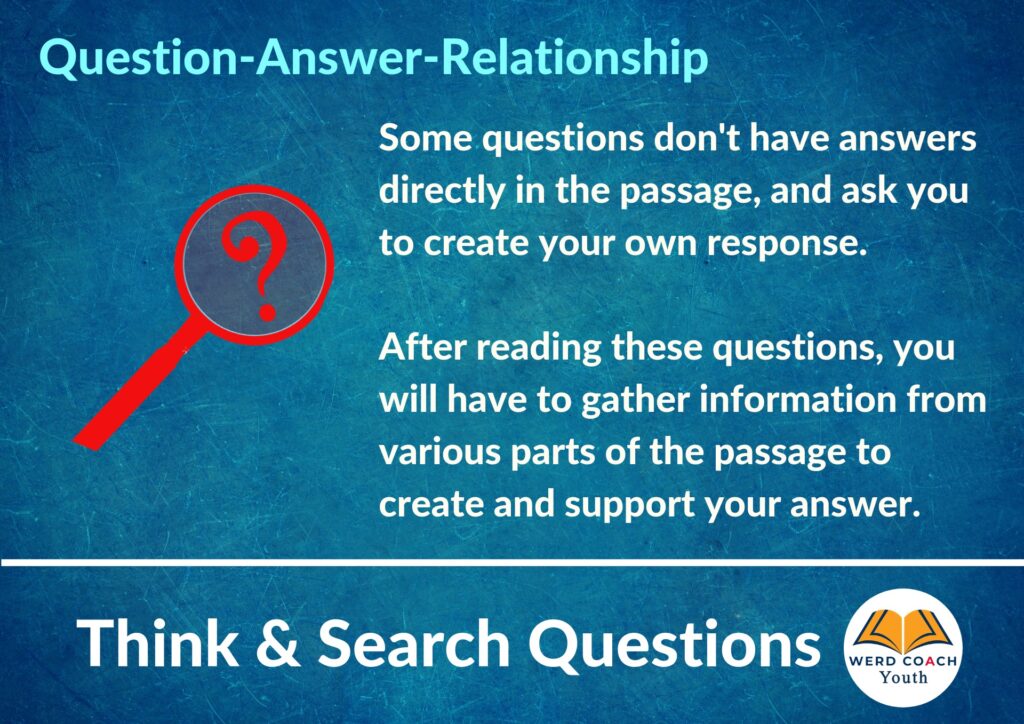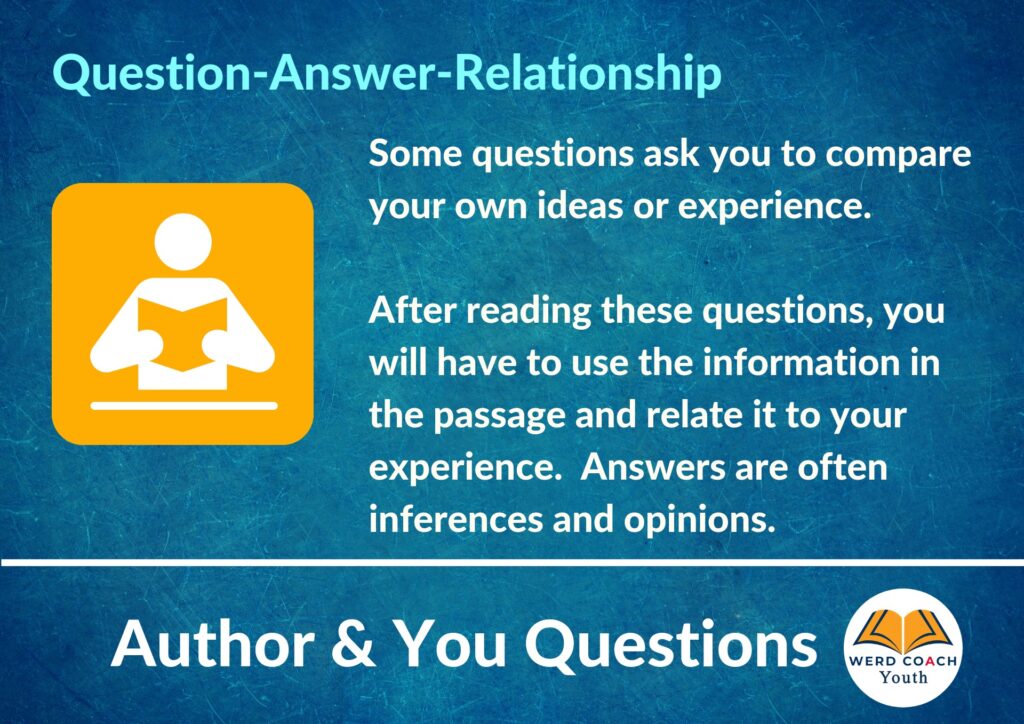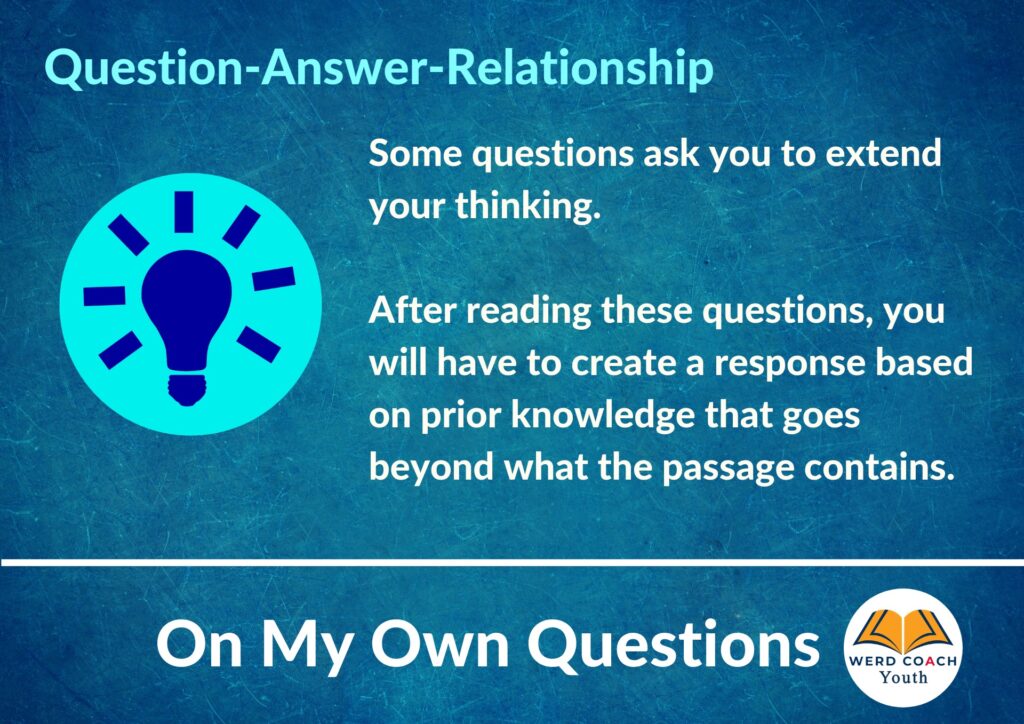In a previous post, we shared five different types of comprehension questions following one approach. Here’s another comprehension strategy called Q-A-R which helps readers decipher what their role is in answering different types of questions. Q-A-R stands for Question-Answer-Relationship, and identifies four types of questions in two categories.
Category 1 – Answers are in the passage
* Right-There Questions: Answers are stated directly in the passage.
* Think & Search Questions: Answers are stated in the passage, but not all in one place. Readers must piece the information together to fully answer the question.
Category 2 – Answers are in the reader’s head
* Author & Me Questions: Author gives clues to the answers, which must be combined with the reader’s knowledge in order to arrive at a complete answer to the question.
*On My Own Questions: Answers are based on the reader’s knowledge of the passage and previous knowledge of the topic the passage is written about, and are completely created by the reader.
Category 1 questions are usually straightforward and typically easier to answer, while Category 2 questions require more critical and creative thinking.

Right-There Questions usually ask for identification of Who, What, Where, or When. Sometimes, even How or Why can be found directly in the passage. An easy way to find answers for these types of questions is to use key words from the question to guide where the answer is.
For example:
Give one detail about the trip that the writer enjoyed, even though it rained.
Another way to phrase this question is: What did the writer enjoy about the trip, even though it rained?
Key words in this question are: enjoyed, trip, rained. Chances are that you would find one or more of these words directly in the passage. The answer will usually be near where you find those key words…either in the same sentence, or in a sentence before or after.
Other similar questions:
1. Where did the fairies come from?
2. Who brought the magic wand?
3. When was Tania’s birthday?
4. How did Andy open the box?
5. Why did Little Red Riding Hood go to Grandma’s house?

These types of questions often ask for you to put information in your own words. In order to answer them effectively, you will need to read the passage to find relevant information. Many times, these questions ask Why or How and you will need to put together details from many areas in the passage to formulate a response.
For example:
How is Richard’s behavior enthusiastic?
This question calls for two things. First, it calls for an understanding of the word ‘enthusiastic’, then it calls for gathering details about Richard’s behavior to support the idea that it was enthusiastic.
Most likely, details of Richard’s behavior are not all in one place. You will have to read the passage and collect examples of his behavior that fit with the idea of being enthusiastic. Then, you’ll need to present that information in your answer.
Here are other examples of these types of questions:
1. How did the main character find out about the villain?
2. What caused the city to lose hope in the hero?
3. Find 2 examples in the passage that show the villain thought he was doing the right thing.
4. Summarize the passage.
5. How did the hero overcome the villain?

These questions often ask readers to put themselves in the position of the writers or authors, and speculate about the story, characters, and language used.
For example:
What is the main idea of paragraph 3?
This question asks for the reader to consider what the writer’s intentions were, and use information from the passage to support an information about the message the writer conveyed.
Take a look at a few other questions of this type:
1. Why did the writer use the phrase “lost to the world” in paragraph 1?
2. The passage says that Cindy was unhappy at her new school. What can she do to make herself feel better?

Many of these types of questions ask readers to give their opinions or recommendations, and even express how they feel about characters or situations in the passage. Readers can even attempt these questions without reading the passage, although they may miss vital points if they do that because opinions are based on what the passage contained.
For example:
Do you think if the villain apologized for his actions, that the hero would forgive him?
It is likely that nothing in the passage would help you answer that question. You must use your experience and understanding of the type of person the hero is, based on how the passage portrays him, to answer the question on your own.
Other questions of this type can typically take the following forms:
1. Do you feel any sympathy for the villain?
2. Do you think the villain would have been evil if his classmates had been nicer to him when he was in secondary school?
3. The villain wanted to capture the hero, not harm him. What could be some reasons for that?
4. If you were the hero, what would you recommend happen to the villain after capturing him?
5. Do you believe the villain and the hero are fighting for the same reasons?

